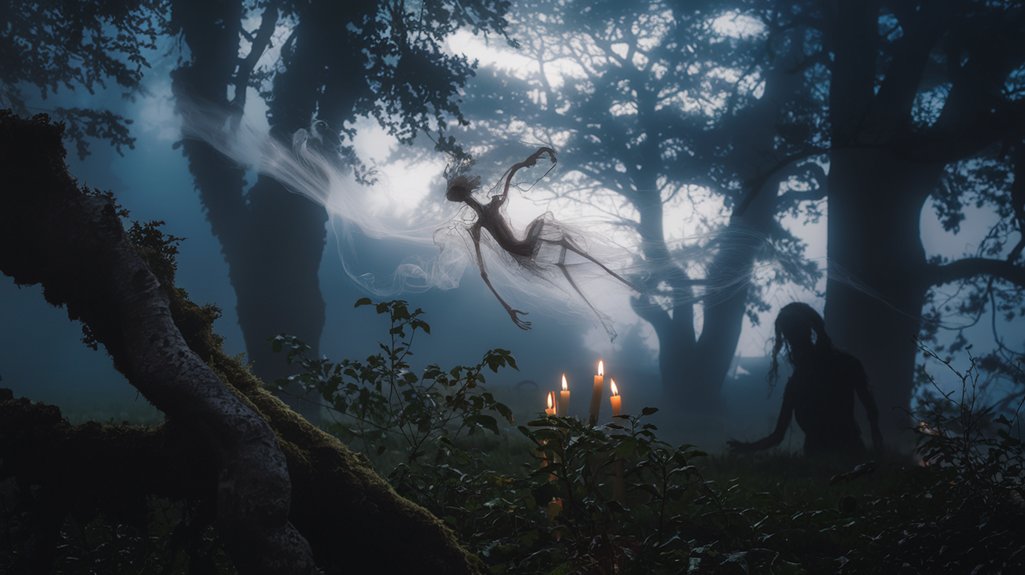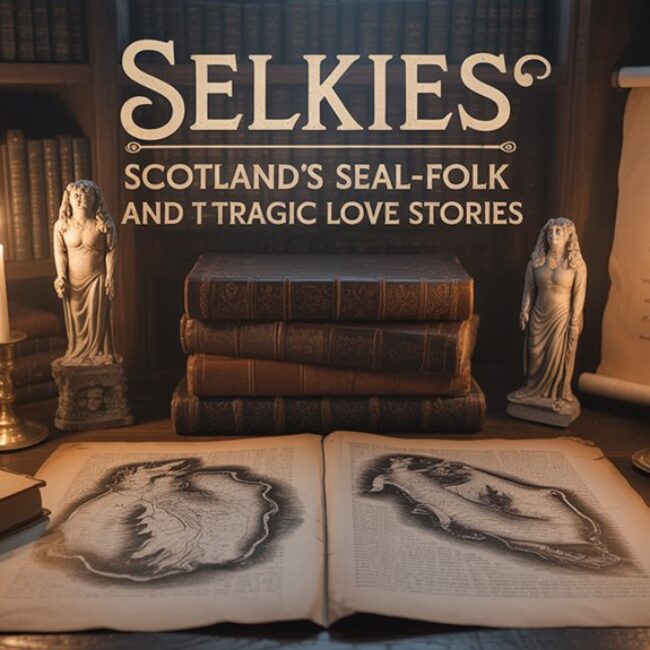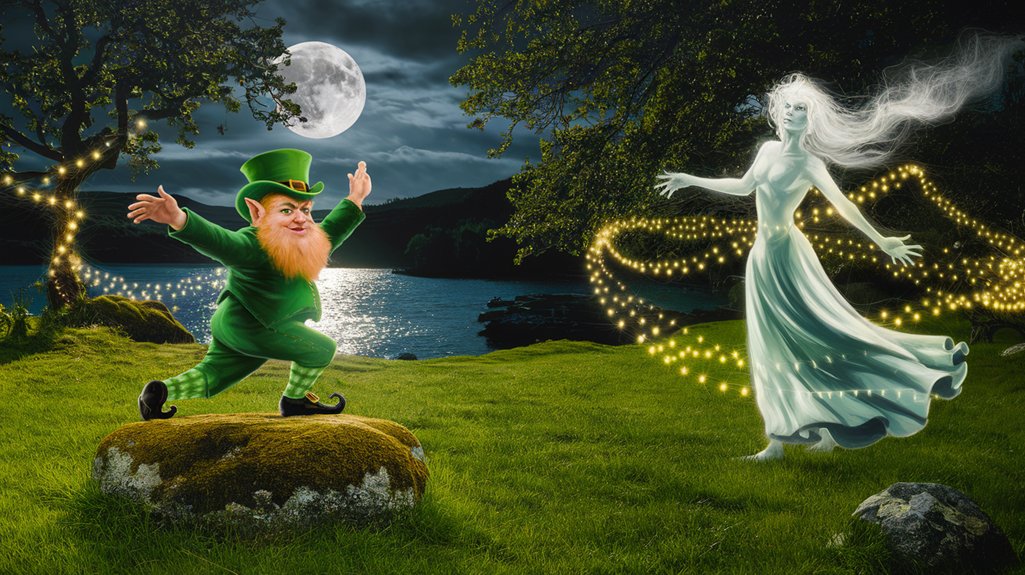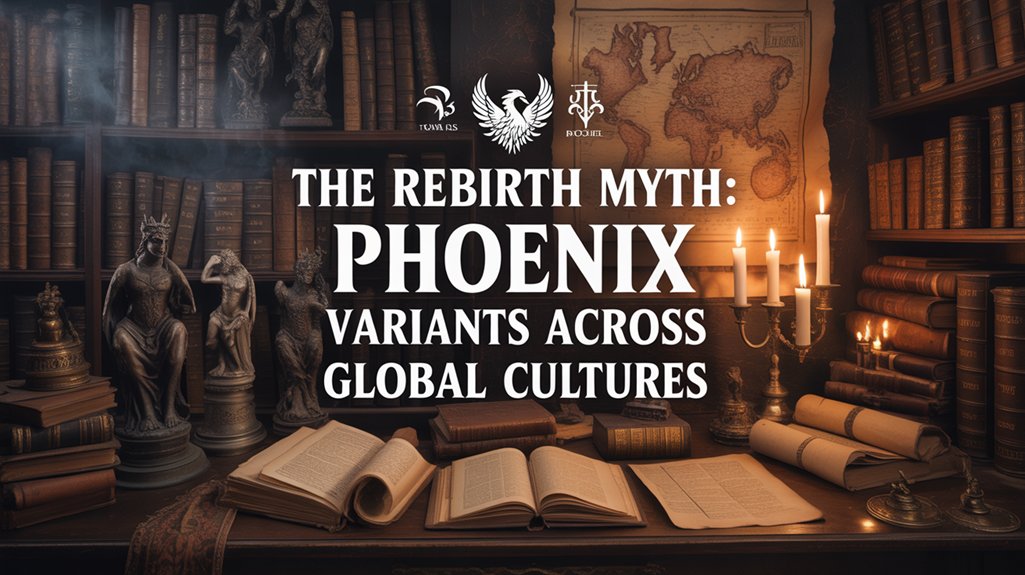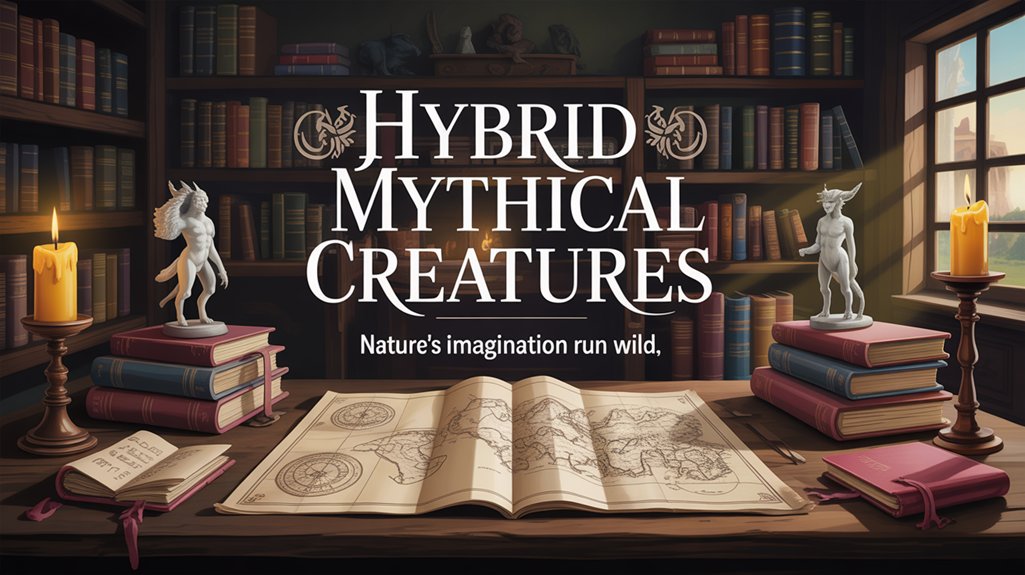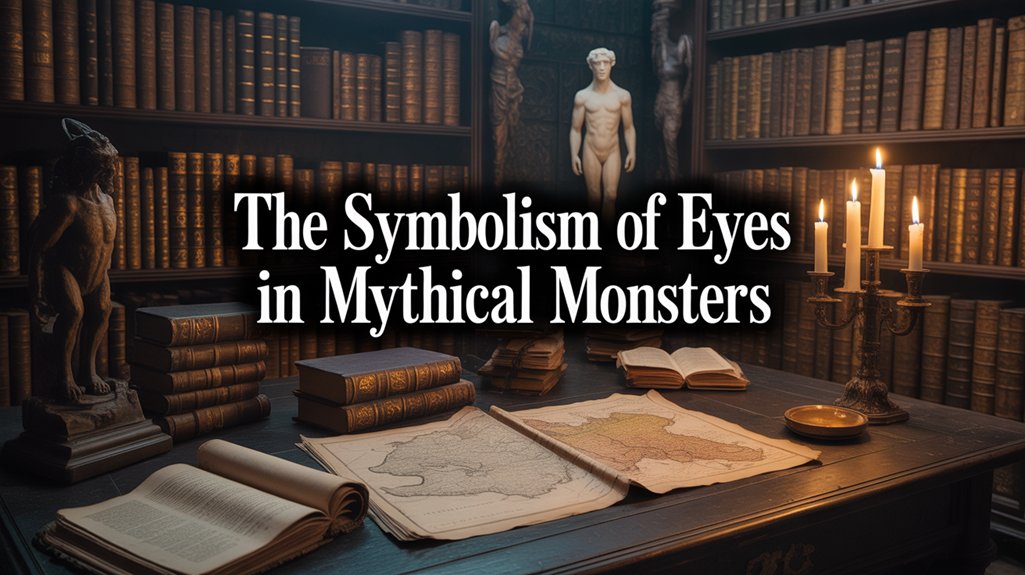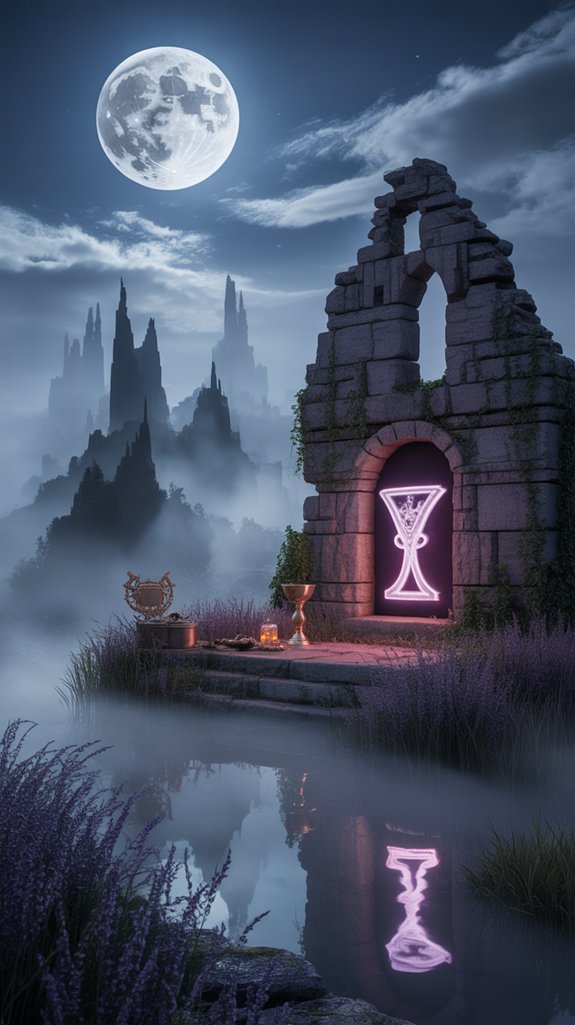
You’ll discover that vampire mythology evolved independently across civilizations—from Mesopotamian blood-demons like Lilith haunting Babylonian tablets circa 2000 BCE, through Greek Vrykolakas revenants threatening excommunicated souls, to Slavic burial rituals preventing reanimation. These convergent archetypes crystallized in Bram Stoker’s 1897 *Dracula*, altering fragmented folklore into modern consciousness while reflecting universal anxieties about mortality, disease manifestations like porphyria, and liminal existence between death and unlife. The ritualistic responses spanning four millennia reveal humanity’s persistent negotiation with supernatural terrors that continue shaping contemporary portrayals across global media landscapes.
Table of Contents
ToggleKey Takeaways
- Mesopotamian civilizations (4000 BCE) established foundational vampire archetypes through blood-drinking demons like Lilith, Lamashtu, and Ekimmu spirits.
- Greek Vrykolakas and Slavic revenants evolved vampire mythology, introducing exhumation rituals and protective ceremonies to prevent undead resurrection.
- Bram Stoker’s 1897 *Dracula* crystallized fragmented folklore into a definitive archetype, merging historical figures with supernatural predation narratives.
- Medical conditions like porphyria and tuberculosis epidemics fueled vampiric interpretations, blending disease symptoms with supernatural folklore across cultures.
- Modern media transformed vampires from pure monsters into morally ambiguous figures, reflecting contemporary anxieties and outsider experiences in society.
Blood Myths Across Civilizations

How did humanity first conceptualize the terror of the undead, those liminal beings that transgress the boundary between life and death?
Ancient Mesopotamia gave birth to eldritch entities like Lilith and Lamashtu, blood-drinking demons who haunted birthing chambers, their presence warded off through protective amulets inscribed with sacred incantations.
Mesopotamian demons Lilith and Lamashtu stalked birthing chambers, their blood-thirst repelled only by amulets bearing sacred protective incantations.
Greek mythology altered these vampire archetypes into seductive predators—Empusa, Lamia—chimeric figures who consumed men’s blood beneath moonlit skies.
You’ll find similar manifestations across continents: Indian vetalas inhabiting corpses, pishachas draining life force from trembling victims.
Jewish traditions preserved the Alukah, that leech-like horror, while Romanian folklore distinguished between living strigoi, witches wielding vampiric power, and their reanimated corpses stalking villages after death.
These cultural interpretations reveal humanity’s universal fear of blood loss, of being drained, consumed, altered.
Each civilization crafted its own language for this ancient dread, yet the essence remained constant—something hungry, something that won’t stay buried.
##
The primordial terror of the vampire finds its earliest articulation in ancient Mesopotamia’s clay tablets and incantations, where blood held both sacred and eldritch properties—life force, divine offering, and the currency of damnation.
Among these shadowed cosmologies, you’ll encounter Lilith, that first demoness of the night who abandoned Eden’s gardens to haunt the wilderness, preying upon infants and draining life force from sleeping men with whispered curses and spectral touch.
Alongside her roamed the ekimmu, those piteous restless dead denied proper burial rites, their chimeric forms drifting through Babylonian streets seeking the blood sustenance that might anchor their wandering spirits to corporeal existence.
Ancient Mesopotamian Blood Beliefs
Before vampires stalked the foggy moors of Eastern Europe or haunted the Gothic imagination of Victorian England, blood-drinking entities prowled the ancient landscapes of Mesopotamia, where civilization itself first took root between the Tigris and Euphrates rivers circa 4000 BCE.
Within Mesopotamian demonology, you’ll discover Lilith, the night-stalking demoness who craved infant blood with insatiable hunger. Lamashtu embodied chimeric terror—lion-headed, donkey-bodied, preying upon pregnant women and newborns.
The Gallu spirits, eldritch companions to Lilith, threatened households through blood consumption rituals and flesh-devouring frenzies. These weren’t mere superstitions; families clutched protective amulets bearing sacred invocations against these entities.
Fear permeated daily existence. These Mesopotamian blood beliefs established foundational archetypes that would echo through millennia, shaping vampire mythology across continents and cultures yet unborn.
Lilith: First Vampire Demon
When Babylonian scribes etched cuneiform tablets circa 2000 BCE, they recorded encounters with Lilitu—a wind demon whose nocturnal visitations brought terror to households across ancient Mesopotamia.
You’ll find her eldritch presence altered through Jewish folklore into Adam’s rebellious first wife, cast from Eden for refusing submission.
Lilith’s symbolism crystallized into the primordial vampire archetype: blood-drinking demon who stalked cradles, preying upon vulnerable infants and sleeping men.
The Hebrew “Alukah”—leech—captures her sanguinary essence. Her chimeric nature allowed alteration into lupine forms, strangling victims through seductive enchantment.
Lilith’s amulets, inscribed with protective invocations, hung above children’s beds throughout ancient Jewish communities, tangible defenses against her malevolent hunger.
She remains humanity’s earliest documented vampire demon, bridging Mesopotamian demonology and Judaic mysticism.
Like countless mythical creatures across cultures, Lilith embodied humanity’s deepest fears while serving as a cautionary tale that reinforced societal values and protective rituals.
Babylonian Night Spirit Tales
Mesopotamian darkness harbored predatory spirits whose hunger transcended mere demonic malevolence—these entities demanded blood.
Within Babylonian folklore, Lamashtu emerged as perhaps the most terrifying manifestation: a chimeric horror bearing a lion’s skull atop a donkey’s corrupted frame, stalking birthing chambers to drain newborns.
The Gallu spirits prowled alongside Lilitu’s feminine darkness, eldritch invaders breaching household thresholds to consume human flesh.
These weren’t metaphorical threats—ancient Mesopotamians carved protective amulets, tangible defenses against corporeal dangers.
Their nocturnal fears crystallized into apotropaic rituals, acknowledging powers that defied rational governance.
Blood-drinking, child-hunting, boundary-violating: these Babylonian entities established the vampiric archetype millennia before European coffins opened.
You’re witnessing humanity’s primordial confrontation with predation wearing supernatural faces, foundational terror that would echo through centuries.
Ekimmu: Restless Dead Spirits
Three conditions condemned ancient Mesopotamians to become Ekimmu—violent death, burial denial, or unfulfilled earthly obligations—transforming the deceased into spectral predators that hungered for the essence they’d lost.
You’ll find Ekimmu origins stretching back to Sumerian antiquity, where these eldritch manifestations emerged from humanity’s primal terror of mortality’s unfinished business. Shadowy, chimeric entities stalked moonless nights, draining crucial energy from living victims who’d failed their ancestral duties.
Ekimmu rituals became your ancestors’ desperate shield against supernatural predation. Proper burial rites, libation offerings, food provisions for the departed—these weren’t mere customs but survival necessities.
The Mesopotamians understood what you’ve forgotten: death demands respect, protocol, completion. Neglect these sacred obligations and the restless dead return, hungry and vengeful.
These energy-vampires embodied humanity’s oldest nightmare: unfinished souls trapped between worlds, forever seeking what mortality denied them.
Mesopotamian Blood-Drinking Demons
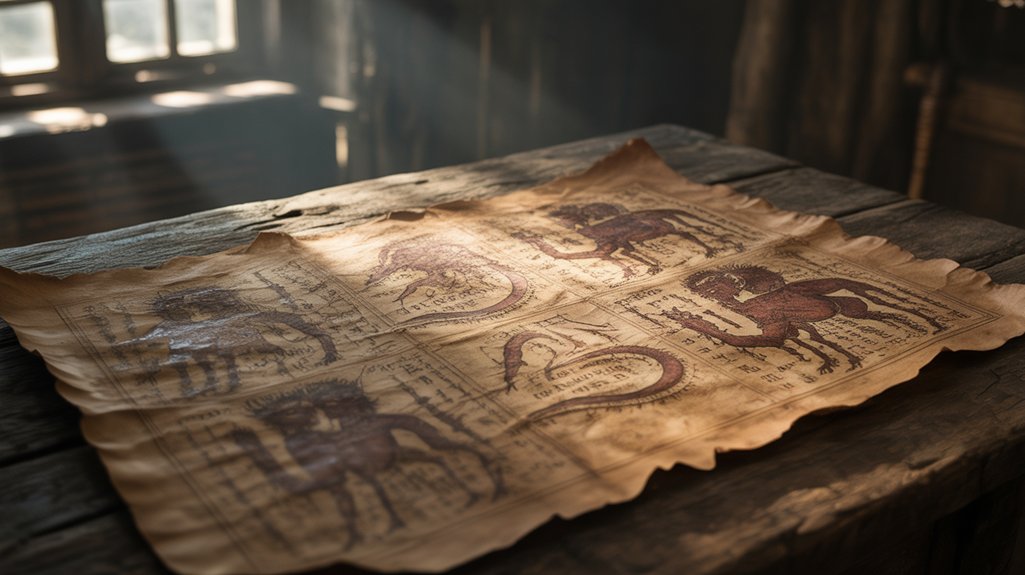
Along the Tigris-Euphrates River Valley, you’ll find humanity’s earliest documented encounters with blood-drinking entities—chimeric horrors etched into clay tablets dating to 2000 BCE, their cuneiform warnings preserved across four millennia.
Lamashtu emerges from these ancient inscriptions as an eldritch predator, her lion’s head and donkey’s body haunting birthing chambers where mothers and newborns lay vulnerable to her vampiric hunger.
Protection rituals against these childbirth demons weren’t mere superstition but essential survival practices, as Mesopotamian families inscribed amulets invoking her name alongside Lilitu and Gallu, creating sacred barriers between mortal households and the blood-thirsting darkness beyond.
Lamashtu Tablets From 2000 BCE
Among the earliest documented accounts of vampiric entities, the Lamashtu tablets emerge from ancient Mesopotamia circa 2000 BCE, inscribed in cuneiform script upon clay surfaces that have survived four millennia to bear witness to humanity’s primordial terrors.
You’ll discover that Lamashtu mythology portrays an eldritch predator—chimeric fusion of leonine head and asinine body—who stalked birthing chambers, draining newborns’ blood while mothers lay vulnerable.
These maternal fears weren’t mere superstition but lived realities in societies where childbirth meant potential death. The tablets reveal desperate invocations, protective amulets bearing divine names to repel her malevolent hunger.
She embodied the ultimate violation: corruption of life’s sacred threshold. This ancient tradition of blood-drinking entities established foundational vampire archetypes that would echo through subsequent civilizations, altering yet retaining their essential horror.
Tigris-Euphrates River Valley Origins
Within the alluvial plains where the Tigris and Euphrates converged—that cradle of civilization where cuneiform first etched human thought into clay—a pantheon of blood-drinking demons haunted the collective consciousness with unprecedented sophistication. You’ll find Mesopotamian folklore teeming with entities whose thirst transcended mere sustenance. Blood rituals dominated protective practices.
| Demon | Physical Form | Primary Victims |
|---|---|---|
| Lilith (Lilitu) | Winged feminine entity | Infants, pregnant women |
| Lamashtu | Lion-headed, donkey-bodied chimera | Newborns, nursing mothers |
| Gallu | Eldritch flesh-consuming spirits | Household inhabitants |
These blood-drinkers weren’t metaphorical—they represented tangible threats requiring amulets, incantations, protective wards. Their influence rippled outward through millennia, establishing foundational vampiric archetypes. Ancient fears crystallized into enduring mythology.
Protection Rituals Against Childbirth Demons
When infantile mortality rates soared beyond fifty percent in Bronze Age settlements, desperate households converted their domestic spaces into fortified sanctuaries against supernatural predation.
You’d find childbirth amulets inscribed with protective incantations hanging above birthing chambers, warding off Lilith’s eldritch hunger for infant blood. Lamashtu—that chimeric terror with leonine head and equine body—demanded elaborate demon protection rituals during labor’s vulnerable hours.
The Babylonian Lilitu prowled threshold spaces where life and death intersected, her spectral appetite necessitating constant vigilance. Families invoked sacred names against the Gallu, those flesh-consuming spirits who stalked domestic corridors after nightfall.
These weren’t superstitious gestures but calculated defenses, preserving lineages through ceremonial knowledge passed between generations who understood that survival required acknowledging—and confronting—the malevolent forces inhabiting their world’s shadowed margins.
Ancient Greek Vrykolakas Revenants

In the shadow-draped villages of medieval Greece, the vrykolakas emerged as one of Europe’s most persistent revenant traditions—a creature neither wholly corpse nor spirit, but something eldritch dwelling in the liminal space between death and unlife. Vrykolakas origins trace to excommunicated souls and those who perished through violence, their bodies refusing the earth’s embrace. You’ll find these revenants indistinguishable from the living, wandering moonless nights to drain blood from unsuspecting victims.
| Manifestation Signs | Protective Response |
|---|---|
| Livestock deaths | Exhumation rituals |
| Community plague | Sacred icon placement |
| Unexplained fatalities | Stake through heart |
| Disturbed graves | Decapitation rites |
| Nocturnal visitations | Church sanctification |
Vrykolakas rituals demanded swift ecclesiastical intervention—communities performed elaborate burial ceremonies, seeking redemption for the condemned. These chimeric entities embodied Byzantine anxieties about proper death, theological transgression, and corporeal corruption.
Fear of Premature Burial
Beyond the theological dread of revenants lay a more primal terror—that you might wake beneath six feet of earth, entombed while breath still rattled in your lungs.
Taphephobia history reveals this existential horror pervaded 18th and 19th-century consciousness, bleeding into vampire mythology’s darkest recesses. Communities witnessed corpses exhibiting uncanny liveliness—bloating, blood-stained mouths, preserved flesh—and read these necromantic signs through twin lenses of vampirism and premature interment.
The eldritch conflation proved catastrophic:
- Staking suspected vampires prevented both resurrection and escape
- Decapitation rituals guaranteed permanent silence
- Cremation practices obliterated any chance of reanimation
- Safety coffins emerged with bells, breathing tubes, escape mechanisms
- Mass exhumations followed hysteria, revealing perfectly preserved bodies
These chimeric fears drove innovation and violence alike.
You’d find safety coffins engineered with elaborate warning systems—technological talismans against the liminal nightmare where death masqueraded as life, where burial became imprisonment, where the grave’s stillness concealed desperate struggle.
Mercy Brown Rhode Island Case
You’ll find America’s most compelling vampire case emerged not from European folklore but from the snow-laden soil of nineteenth-century Rhode Island, where the Brown family tragedy unfolded with eldritch inevitability.
In 1892, when tuberculosis—that spectral consumer of flesh—had already claimed Mercy’s mother and sister, the community’s terror manifested in an ancient ritual: exhumation, the burning of her preserved heart, the feeding of those consecrated ashes to her dying brother Edwin.
This chimeric fusion of New England pragmatism and Old World superstition marked the last documented vampire hunt on American soil, converting a tubercular girl into an enduring specter of our collective unconscious.
The Brown Family Tragedy
When tuberculosis—that spectral contagion known to nineteenth-century New Englanders as “consumption”—descended upon the Brown family of Exeter, Rhode Island, in 1883, it initiated a cascade of deaths that would culminate in one of America’s most documented cases of vampiric exhumation.
You’ll discover how this affliction claimed Mary Eliza, the matriarch, followed by Mary Olive, the eldest daughter. The disease’s eldritch manifestations—pallor, wasting, blood-stained lips—convinced neighbors that something preternatural fed upon the living.
When Edwin Brown contracted the same malady after his sister Mercy’s death in 1892, the community’s dread crystallized into action. The Brown family tragedy exemplifies how rational minds, confronted with inexplicable suffering, embraced chimeric explanations.
Vampire hysteria flourished where medical understanding failed.
Exhumation and Heart Ritual
As winter’s grip loosened upon the frozen earth of Exeter in March 1892, George Brown authorized an act that would inscribe his daughter’s name into America’s dark folklore—the disinterment of bodies from the family plot.
What emerged defied natural decomposition. Mercy’s corpse, preserved by winter’s cold, exhibited liquid blood—an eldritch sign interpreted as vampiric sustenance. The examining physician observed her organs remained intact, yet community terror demanded ancient remedies.
You witness here vampire exhumation rituals merging Old World superstition with New England desperation. Heart burning practices followed swiftly: Mercy’s organ extracted, incinerated upon blacksmith’s stone, ashes dissolved in medicinal water.
Her consumptive brother Edwin consumed this chimeric potion—a final, futile gesture against tuberculosis masquerading as supernatural predation. Science met folklore. Folklore prevailed.
America’s Last Vampire Case
Though countless vampire legends populate European chronicles, the Mercy Brown case of 1892 stands as America’s definitive confrontation with undead mythology—a culmination of New England’s tuberculosis connection reshaped into necromantic ritual.
You’ll find Exeter, Rhode Island altered into an eldritch theater where disease masqueraded as supernatural predation. The Brown family’s sequential deaths—mother, sister, daughter—created a chimeric narrative blending contagion with vampire folklore.
When you examine Mercy’s corpse, unusually preserved two months post-burial, you witness rationality collapsing before winter’s cold preservation. Her heart, extracted and incinerated, its ashes dissolved in medicinal water for her dying brother Edwin, represents America’s final surrender to Old World superstition.
This desperate act failed. Edwin perished regardless, closing the chapter on institutionalized vampire belief in the New World.
Bram Stoker’s 1897 Dracula
The Gothic masterpiece that emerged from Bram Stoker’s pen in 1897 crystallized centuries of fragmented vampire folklore into a singular, groundbreaking vision—one that would irrevocably shape humanity’s understanding of the undead.
Drawing upon Vlad III Dracula’s blood-soaked legacy, Stoker altered historical brutality into something far more eldritch: a character embodying both monstrous predation and tragic allure.
His epistolary format—letters, diary entries, newspaper clippings woven together—created immediacy that transcended typical Victorian narratives:
Stoker’s fragmented voices—diary confessions, telegrams, phonograph cylinders—constructed truth from multiple testimonies, transforming readers into investigators of supernatural horror.
- Gothic elements merged with contemporary anxieties about sexuality, imperialism, and disease
- Character duality positioned the vampire as simultaneously repulsive and seductive
- Historical inspirations grounded chimeric fantasy in tangible reality
- Literary influence established the vampire archetype for generations
- Cultural impact spawned adaptations that continue reverberating through collective consciousness
You’ll find that Stoker didn’t merely write fiction; he created mythology.
His Count altered scattered superstitions into coherent legend, offering freedom-seekers a mirror reflecting civilization’s deepest fears and forbidden desires.
Porphyria Disease Vampire Connection
Why would entire villages flee from individuals whose skin erupted in sun-exposed blisters, whose teeth appeared bloodstained, whose faces contorted into animalistic grimaces? The answer lies within porphyria folklore, where genetic disorders manifested as eldritch alteration.
These rare metabolic conditions disrupted heme production, casting sufferers into photosensitive torment—their flesh blistering beneath solar rays, their features disfigured into chimeric masks that terrified superstitious communities. Dark urine, rich with excess porphyrins, pooled blood-red in chamber pots.
Neurological ravages brought anxiety, confusion, behaviors deemed supernatural rather than symptomatic. You’re witnessing how medieval populations, lacking biochemical understanding, altered medical reality into vampiric myth. Each outbreak fed the hysteria, each victim became evidence of blood-drinking entities stalking the night.
The connection between clinical pathology and folklore remains profound, demonstrating how humanity’s fear of the unknown reshapes suffering into monster. These weren’t undead predators but individuals imprisoned by their own biology, persecuted for conditions beyond comprehension or cure.
Modern Media Vampire Portrayals
Contemporary manifestations—*Buffy*, *Twilight*, *True Blood*—reveal vampires as mirrors of your cultural anxieties. Alienation. Identity. Relationship complexities.
These eldritch figures now embody moral ambiguity, rejecting simplistic good-evil dichotomies. You’ll find them traversing societal margins, representing outsider experiences, challenging normative structures.
They’ve evolved beyond monsters into philosophical constructs, freedom-seekers trapped in eternal existence. Each portrayal speaks to your generation’s struggles, reshaping ancient Slavic revenants into vessels exploring autonomy, desire, belonging—forever relevant, forever changing.
Enduring Cross-Cultural Blood Symbolism
How does blood—that crimson essence pulsing through mortal vessels—sustain such enduring power across disparate mythological landscapes?
You’ll find its symbolism threading through Mesopotamian night-terrors, where Lilith and Lamashtu embodied cultural fears surrounding maternal mortality, their hunger for infant blood manifesting collective anxiety about childbirth’s precarious threshold.
Greek traditions altered these anxieties into vengeful seductresses—Lamia, Empusa—whose consumption represented desire’s darker trajectories, the chimeric fusion of attraction and annihilation.
Blood rituals emerged as protective responses. Jewish communities invoked safeguards against the Alukah, that eldritch bloodsucker haunting their folklore’s margins.
Slavic peoples developed elaborate communal ceremonies, confronting their dread of unnatural death through apotropaic practices designed to prevent vampiric resurrection.
Across continents, blood marks boundaries you dare not cross: life and death, sacred and profane, human and otherworldly.
It flows through these narratives as simultaneously literal sustenance and metaphysical transgression, revealing humanity’s perpetual negotiation with mortality’s mysteries.
This crimson thread binds disparate traditions into singular, enduring legacy.
Frequently Asked Questions
How Do Different Religions View Vampires and Vampire-Like Creatures?
You’ll discover religious interpretations vary dramatically across traditions.
Christianity views vampires as demonic manifestations, souls cursed beyond redemption—eldritch abominations defying resurrection.
Islam considers blood-drinking jinn as chimeric threats to spiritual purity.
Hindu mythology recognizes vetālas, corpse-inhabiting entities whose mythological origins predate European folklore by millennia.
Buddhism acknowledges hungry ghosts, pretas eternally thirsting.
Each tradition treats these liminal beings as cautionary symbols, warnings against spiritual transgression.
You’re witnessing humanity’s universal struggle to comprehend death’s boundaries, manifested through culturally-specific supernatural frameworks.
What Are the Most Effective Traditional Methods for Killing Vampires Worldwide?
You’ll find silver stakes piercing the heart prove most efficacious across Balkan traditions, their eldritch properties disrupting the revenant’s corporeal tether.
Decapitation—swift, decisive—severs the chimeric connection between body and malevolent spirit.
Romanian lore prescribes garlic wreaths placed within coffins, their pungent oils corrupting undead flesh.
Fire cleanses absolutely, reducing the creature to ash, preventing resurrection.
These methods, documented since medieval chronicles, represent humanity’s ancestral warfare against nocturnal predation, granting you freedom from supernatural subjugation through consecrated violence.
Do Vampire Bats Have Any Connection to Vampire Legend Origins?
You’ll discover that vampire bats weren’t the catalyst—they’re merely nature’s mirror.
European folklore origins predated New World contact; vampiric legends thrived centuries before 1492. The eldritch coincidence emerged later: conquistadors encountered these sanguivorous creatures, their nocturnal bat behavior echoing existing myths.
Consequently, the chimeric fusion occurred retroactively. Your ancestors created bloodthirsty revenants from plague, premature burial, misunderstood decomposition.
The bats simply reinforced what darkness already whispered. Causation reversed. Symbol became confused with source, binding winged hunters to undead mythology forever.
Which Countries Have the Highest Reported Vampire Sightings Today?
You’ll find the most vampire sightings reported in Romania, Serbia, and Poland—nations where cultural beliefs in the undead remain woven into collective consciousness.
These eldritch encounters persist in Transylvanian villages, along the Danube’s shadowed banks, in Carpathian hamlets where folk memory endures.
Modern Romania documents hundreds of cases annually. The Balkans harbor similar accounts.
These aren’t mere superstitions but living traditions, ancestral knowledge transmitted through generations who’ve witnessed the liminal, the inexplicable, the darkness that defies rational dismissal.
How Did Vampire Folklore Influence Burial Practices in Medieval Europe?
You’d think entire villages went mad with terror—and perhaps they did.
Medieval vampire burials altered European graveyards into fortified zones against eldritch resurrection. You’ll find folklore rituals demanded staking corpses, severing heads, placing stones in mouths, positioning bodies face-down.
The chimeric fear of revenants freed communities to desecrate graves without ecclesiastical punishment. These practices, documented from twelfth-century chronicles, reveal how supernatural dread liberated mortals to mutilate the dead, creating archaeological evidence that still haunts modern excavations.
Conclusion
You’ve traversed millennia of sanguinary mythos, from Mesopotamia’s eldritch Lamashtu to Stoker’s chimeric count, witnessing how humanity’s most primal dread—death’s ambiguous threshold—manifests across every civilization. These blood-drenched narratives aren’t mere folklore; they’re humanity’s desperate attempt to comprehend the incomprehensible abyss. The vampire persists because you cannot escape mortality’s shadow. Ancient or modern, Eastern or Western, the revenant endures—immortal, insatiable, eternally dwelling in that liminal space between extinction and existence.



